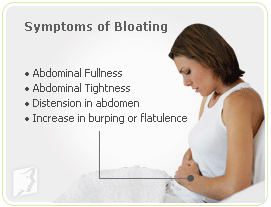“Empowering the Coffs Coast to be the happiest & healthiest community in Australia”
#strongertogether #fitnessandfun #coffscoasthealthclub
Healthy Movie Night!
Join the Healthy Inspirations Team for another cracker of a movie. This time our inspirational movie is Unsupersize Me!
Unsupersize Me documents the inspiring story of Juan-Carlos Asse, a personal trainer in Gainesville, Florida, and his quest to prove that a whole foods, plant based diet coupled with an exercise regimen is capable of remarkably and rapidly improving the health of any and every individual. Asse embarks on a journey with Tracy Ryan, a woman who has been morbidly obese her entire life, guiding her from poor health to a new life, one she could have never envisioned. Watch the amazing transformation as Ryan loses 90kgs in a single year! The film reveals an interesting twist divulging Asse’s past, a seven year sentence served in federal prison for drug charges.
Participants of the 12 Week No Butts Challenge can come to the movie night for free & also bring a friend for free too. Anyone else just needs to pay $5 at reception. There will be giveaways and a lucky door prize on the night.
When: Wednesday 11th Feb
Time: 6.30-8pm. Movie Duration is 74 minutes
Where: Coffs Coast Health Club Childminding Room
RSVP: by Monday 9th Feb (seating is limited so book in early to avoid disappointment) at reception on 6658 6222 or in person
Sponsored by: Healthy Inspirations
Start Your New Fitness Career in 2015!
Are you over your job? Do you need a change?
If so, then do something you’re passionate about, help people achieve their goals & kickstart your own career in fitness!
NEW YEAR SPECIAL OFFER! Become a Personal Trainer & learn how to run your own business at the same time! SAVE $900 when you enrol in the Diploma of Management package which includes:
love my office PT life 2~ Certificate IV in Fitness – the Complete Personal Trainer course!
~ Diploma of Management via VET FEE-HELP
~ AIPT starter kit which includes a Gym Bag, Towel and Work Out Shirt
~ Bonus 12 month Australian Institute of Personal Trainers membership
Act now to have an exciting career that helps keep you fit & healthy. Experience the best hands on practical training available & begin your new
career today in the regions most awarded health club.
NEW COURSE STARTS FEBRUARY but the sooner you start, the sooner you finish! We only enrol a maximum of 15 students at any one time, so call Tracy on 0429 695 096 or email her at coffscoast@aipt.com.au for further details & to secure your spot as we only have 8 places remaining.
Grab your FREE VIP PASS for a friend!
School has gone back, the summer holidays are over and the New Year is well and truly underway. This is the perfect time to start your exercise routine and work on a fitter and healthier you! Sometimes this can be made so much
easier and can be lots more fun when you do it with friends.
Do you have a friend or a family member that you think might like to try your favourite class? Why not give them a VIP Pass and ask them to come and try the class for FREE. Ask at reception for some VIP passes to give to your family and friends…. you never know who you might inspire! Friends don’t let friends sit on the couch….

Baby Boomers Classes
As we get older the need to exercise and stay fit and healthy becomes far more important. Did you know that we have 5 classes every week that are dedicated specifically to our Boomers? These classes go for 55 minutes and are on at 8am Monday through to Friday.
Monday and Wednesdays are BBFITSTRONG – a strength, fitness and flexibility class. Tuesday and Thursdays are BBCIRCUIT – a gentle strength, fitness and flexibility class that incorporates balance and coordination exercises. On Fridays we have BBCOREFLEX – a specialised class which targets increased flexibility, as well as abdominal and lower back strength. In addition to the health and wellbeing benefits that are gained through being active there are many social benefits in attending these classes. Why not give one of them a try today? Use a FREE VIP PASS and bring a friend too if you like…
Are you planning a personal fitness challenge this year?
Why not try a Gold Coast Marathon event, a Coffs Harbour Half Marathon event or the City to Surf?
Preparation for your event is vital and we have specific running programs (2km, 5km, 10km, half and full marathon programs) to help you achieve your goal. By the time you hit the start line, you will be fit, confident and rearing to go!
Here are some dates to help you plan a target and no matter how far away the event is, we can tailor a training program to your needs.
~ Gold Coast Marathon events Saturday & Sunday 4 & 5th July, Gold Coast (5km, 10km, half or full marathon)
~ City to Surf Sunday 9th August, Sydney (14km)
~ Coffs Harbour Half Marathon events Saturday 6th September (3km, 5km, 10km or half marathon)
Only $35 for 1 x 30minute targeted PT session (Health Club Members)
Only $44 for 1 x 30minute targeted PT session (Non Health Club Members)
Call Glen on 0411 037 097 or Jacqui on 0421 971 155 for more information or to take one of the limited spaces available today!
Are you getting enough?
How do you really feel each day? Do you eat enough raw fruits and vegetables?
We all know we should be eating more fresh fruits and vegetables. In fact the USDA now recommends a minimum of 10 servings a day for optimal health. Top nutrition experts recommend at least 50% of each meal should come from fruits and vegetables.
A main reason people don’t eat that way is price and convenience. Fresh produce can cost over $10 per day and be extremely inconvenient to consume and that’s if you can stomach all of those foods and do it consistently every day.
The solution is NanoGreens! At only $2.35 per day NanoGreens were developed BY healthcare professionals, FOR healthcare professionals, knowing that plant based nutrition is the future of health care and health maintenance. 100% natural, no fillers and easily mixed into water, its high quality nutrition at your fingertips.
For the Month of February NanoGreens is available at reception for ONLY $69.99!
February is the month to sweat together!
Valentines Day is coming soon and what better way to feel connected with your significant other than sharing some buddy training with them? We don’t mind who your significant other is either… For some it is their partner but for others it can be their sibling, work colleague or best mate.
Until sold out, our Personal Trainers are offering 4 x 30min buddy sessions to any couple for ONLY $145! That is a massive saving but be quick because each trainer can only provide this special offer to 3 new couples.
Now is the time to get fighting fit, so contact Glen our Personal Training Manager on 0411 037 097, to discuss your needs, answer your questions & organise the best trainer for those needs. Remember that couples that sweat together, stay together!
Welcome Kai!
We are very excited to welcome Kai Rasa to our CCHC Team and our Massage Therapy Department. Kai hails from Hawaii and obviously loves to surf and is a Diploma trained remedial massage therapist who will be working with us on Tuesdays, Wednesdays and Saturday mornings. Health Fund rebates will be available and bookings for Kai can be made through reception by calling 6658 6222. Check out the Welcome Interview on our Coffs Coast TV channel with Kai here www.youtube.com/watch?v=Qbrl6-e7yUo
Welcome Linda!
We haven’t had a chance to officially welcome Linda to the team in our Enews as yet but here she is! Linda comes on board as our Community Connect Manager, reception guru and has been one of our AIPT Trainers for some time now. Linda works full time at CCHC and outside of the club doesn’t mind a bit of stand up paddle boarding. You can find out more about Linda in her Welcome Interview on our Coffs Coast TV channel here www.youtube.com/watch?v=jRucuJ7EpVI
Injury season is in full swing!
Injured yourself playing backyard cricket? Done yourself some harm testing the kids Christmas presents? The kids are back to school so now its time to start taking better care of yourself again…
Don’t let pain or injury keep you out of the club and away from exercise. Our physio team at Coffs Coast MedFit are available Monday, Tuesday and Thursday to have a look at your problem and give the best available advice and treatment to get you back to all the things you love doing sooner.
Not sure if they can help? Why not take advantage of their Free Assessment Vouchers available in the club to all members. This means you can have a full assessment with one of the experienced physios to see what’s wrong and what needs to be done to make it better – for FREE!
To make an appointment call 1300 273 747 or see the reception team. Our physios are back and refreshed after the Christmas break and are ready to help you reach your goals in 2015 without injury.
Hmmmm a Valentines Day Rub!
Pamper Someone Special and Give the Gift of Massage this year. Valentines Day and Massage is like a match made in heaven! We are all about spreading the love and what better way to do that than to buy your Valentine a Massage Gift Certificate.
30, 60 or 90 minute sessions are available, so there is an opportunity to satisfy for everyone on any budget.
Organise the gift in person at reception or over the phone on 6658 6222 and we will have it ready for you tied with a bright red ribbon!














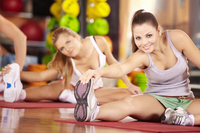


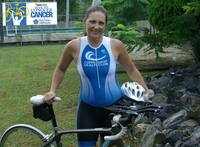
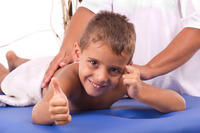








 combining to create
combining to create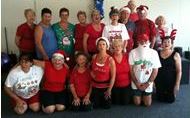 We will have special offers, special events, special times & small gifts to thank our ambassadors, so grab your diary & book out a morning of fitness & fun for everyone.
We will have special offers, special events, special times & small gifts to thank our ambassadors, so grab your diary & book out a morning of fitness & fun for everyone.



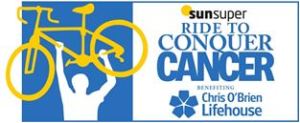
 Great News the Big Balls N Bands sessions start again 9.30 Wednesdays from 6th August. These ever popular sessions are now available to you in the form of a 12 week Group Personal Training Program from the core queen Jacqui.
Great News the Big Balls N Bands sessions start again 9.30 Wednesdays from 6th August. These ever popular sessions are now available to you in the form of a 12 week Group Personal Training Program from the core queen Jacqui.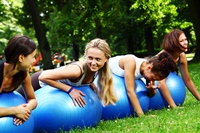 belly plus really good fun and totally time efficient.
belly plus really good fun and totally time efficient. Your health is in your hands this month when you attend our hand reflexology sessions with our resident Massage Therapist Ange Hernandez.
Your health is in your hands this month when you attend our hand reflexology sessions with our resident Massage Therapist Ange Hernandez.
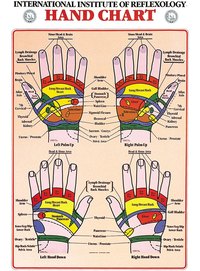 it produces the same positive effects on the brain as meditation. Hand reflexology has also been shown to:~ be beneficial for the heart.
it produces the same positive effects on the brain as meditation. Hand reflexology has also been shown to:~ be beneficial for the heart.

